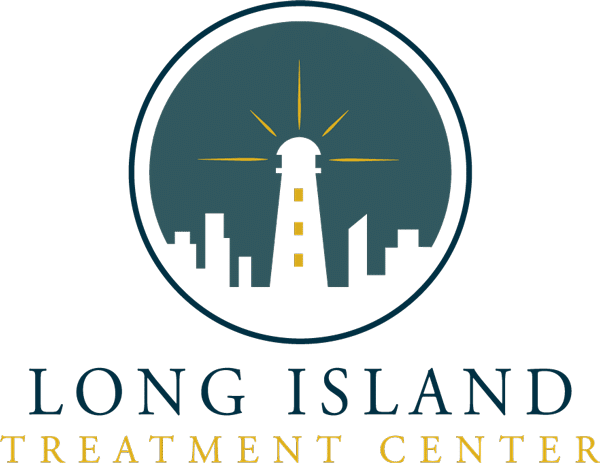Addiction is a brain disease with long-lasting effects, and they often persist even after people detox from a substance and leave the body. Because it alters behavior and impulses, ongoing therapy is essential to overcome it and remain in recovery successfully. One practical continuous treatment approach for people who suffer from addiction is a 12 step program; according to research from the National Institutes of Health, this program yields both short-term and long-term success for many people. To appreciate the benefits of the 12 steps, it helps to understand how they work.
Table of Contents
History of the 12 Step Program
The famous 12 steps date back to the 1930s. At that time, Alcoholics Anonymous was the first program of its kind. Dr. Robert Holbrook Smith and Bill Wilson launched it in Ohio, and it is still one of the most well-known programs today. People who participated in AA at that time found it easier to overcome alcohol addiction. Once more people realized how practical the approach was, professionals used the same methodology to apply to other forms of addiction.
During the next several decades, many other programs that used the same 12 steps emerged, including gambling, sex, drugs, and more. Today, therapists in addiction treatment centers utilize the approach and help people learn to use it as a valuable recovery tool. After patients finish addiction treatment, they often continue attending 12 step meetings to maintain sobriety, support others and receive peer support.
What Are the 12 Steps?
Here are the 12 Steps as defined by Alcoholics Anonymous:
- We admitted we were powerless over alcohol–that our lives had become unmanageable.
- Came to believe that a Power greater than ourselves could restore us to sanity.
- Made a decision to turn our will and our lives over to the care of God as we understood Him.
- Made a searching and fearless moral inventory of ourselves.
- Admitted to God, to ourselves, and to another human being the exact nature of our wrongs.
- Were entirely ready to have God remove all these defects of character.
- Humbly asked Him to remove our shortcomings.
- Made a list of persons we had harmed and became willing to make amends to them all.
- Made direct amends to such people wherever possible, except when to do so would injure them or others.
- Continued to take personal inventory and when we were wrong promptly admitted it.
- Sought through prayer and meditation to improve our conscious contact with God as we understood Him, praying only for knowledge of His will for us and the power to carry that out.
- Having had a spiritual awakening as the result of these steps, we tried to carry this message to alcoholics and to practice these principles in all our affairs.
The 12 steps are individual steps involved in a process that helps people come to terms with what they can and cannot do while focusing on improving their lives. When the steps are combined, the process can be summarized with the following points:
- Admitting powerlessness to control addiction.
- Believing in a higher power that provides strength.
- Analyzing errors of the past through the help of an experienced sponsor with the same type of addiction.
- Making amends with those who were wronged because of past mistakes.
- Learning how to change behaviors and live a more fulfilling life by making positive choices.
- Helping other people who struggle with the same form of addiction.
When people first admit that they cannot control themselves or their addiction, they can move on to the next steps. Believing in a higher power gives people hope. As they analyze the errors that they made because of the addiction, they can see the realities of how addiction affects them. Also, they can gain a better understanding of how addiction may affect those around them, such as spouses, friends, coworkers, and others. Apologizing and making amends can help people move forward, and it can help repair rifts between them and others. Letting go of past errors is a critical part of moving forward, and the 12 step approach focuses heavily on moving forward.

Learning ways to change behaviors can be different for each person. For one person, it may involve counseling or medication. For another person, it may include avoiding specific venues or situations that may be triggering a relapse. Working with a sponsor gives a person the necessary support to keep fighting and stay in recovery. As a person grows and gains more strength, the individual may sponsor someone else. Becoming a sponsor can help others start their recovery journey and give them the stability and support they need.
Why Are the 12 Steps Effective for Treating Addiction?
Two of the most common counseling approaches therapists use during addiction treatment are cognitive behavioral therapy and dialectical behavior therapy. CBT is a process of identifying behaviors or triggers and their causes. For example, imagine that someone who struggles with alcohol addiction receives treatment. CBT may help that individual realize that anxiety and stressful family situations are triggers for turning to alcohol.
When a therapist uses DBT, the goal is often to modify behaviors or avoid triggers. In the previous example, the person with alcohol addiction may see improvement by treating the anxiety and limiting exposure to stressful family situations or dealing with them in another way; once people finish addiction treatment, whether inpatient or outpatient, it helps to continue using the same analysis and change techniques.
A 12 step program allows people to analyze their behaviors and find ways to change them or develop healthier habits. People learn not to blame others or situations for their problems. Instead, they take responsibility and look for a way to change what they can accept what they cannot change and find healthy ways to cope with challenging issues or situations.
Additionally, people learn to make amends, which helps them let go of feelings of guilt, regret, or resentment. When people foster positive emotions and find ways to let go of negative ones, it is easier to focus on recovery. Another element that contributes to the overall success of this approach is the use of sponsors. People who have been through similar situations or struggle with the same form of addiction can often provide better guidance. They understand feelings, cravings, and other factors that people who do not struggle with addiction cannot understand.
Having a supportive role model who fights the same type of addiction can be comforting, helpful, and encouraging to someone. Also, peer support from others provides accountability and motivation to stay in recovery. Another valuable part of the 12 step program is that it has milestones, and people earn recognition from peers or rewards to celebrate their milestones as they continue in recovery.
How Treatment Facilities Use 12 Step Programs
Addiction treatment facilities often introduce people to this method of therapy. However, several other forms of therapy accompany it. For example, there may be individual and family therapy. The 12 step programs are similar to group therapy in some ways. Although the idea of group therapy may sound intimidating at first, most people like it since their peers are people too who they can relate to about life’s struggles.
In other forms of therapy, people learn ways to express themselves and their thoughts. This is helpful throughout the 12 steps since communication is essential. People also learn the tools and techniques to discover themselves. A combined therapy approach helps people learn how to maximize their chances of staying in recovery. When people become familiar with the program during therapy, they will feel more comfortable and confident attending meetings on their own after they leave the treatment facility.
Overcoming Addiction With Treatment in Long Island
If you or a loved one is struggling with addiction and feel ready to reach out for help, Long Island Treatment Center is here to assist you. Our facility is a safe, tranquil, and supportive environment that fosters growth and encouragement. We can help provide intervention resources if you are trying to help a loved one. If you are reaching out for help for yourself, we offer partial hospitalization, intensive outpatient, and other treatment structures to fit your individual needs.
Also, since many people who struggle with addiction have an unmet mental health need, we offer dual diagnosis treatment. Treating an underlying mental health issue and an addiction simultaneously reduces the risk of relapse and helps people feel better. We welcome people who struggle with addiction to alcohol, opiates, cocaine, marijuana, and other substances to contact us about our treatment programs for these addictions. Our team believes that every person deserves to be happy and live to their fullest potential. To learn more about the 12 steps or our other programs, please get in touch with us.
References
https://www.ncbi.nlm.nih.gov/pmc/articles/PMC3753023/
https://www.ncbi.nlm.nih.gov/pmc/articles/PMC2797106/

